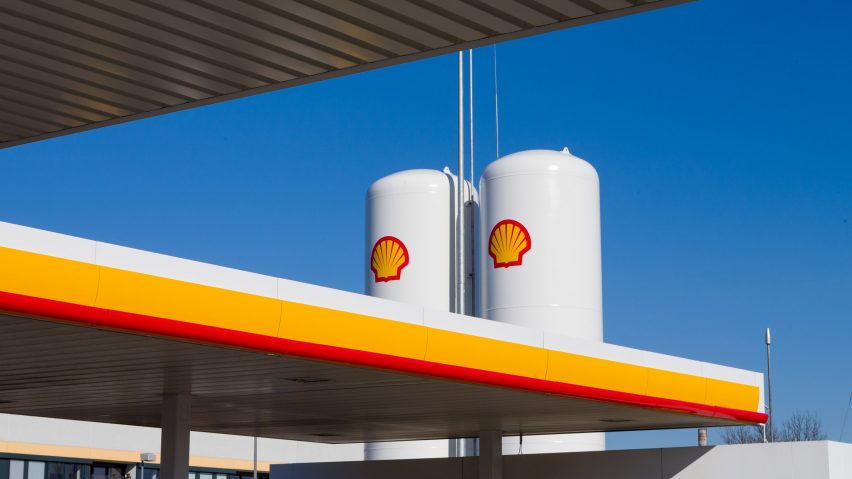
Shell carbon-capture facility found to be generating more emissions than it prevents
A prototype carbon capture and storage facility by Shell, which was designed to eliminate emissions from hydrogen production, actually has the same yearly carbon footprint as 1.2 million cars, according to a report by Global Witness.
Shell says its Quest plant captured close to five million tonnes of CO2 over the course of five years after it was installed at the oil giant's Scotford refinery in Canada in 2015.
But the report by human rights organisation Global Witness found that over the same half-decade, it emitted just over 7.5 million tonnes of greenhouse gases that weren't captured – the equivalent to emissions from 1.2 million cars every year.
The greenhouse gases emitted include highly potent methane, which in the short term has a more than 80-times higher global warming potential than carbon dioxide.
Above: the plant failed to capture 7.7 million tonnes of greenhouse gases. Top image: a Shell hydrogen fuelling station
Global Witness argues that this casts doubts on the messaging pushed by the oil and gas industry that, with the help of carbon capture and storage (CCS) technology, hydrogen derived from natural gas can be used as a "low emissions" fuel to help the world reach its net-zero goals.
"Fossil fuel companies see fossil hydrogen as a way of continuing to make profits from extracting and burning fossil gas, whilst greenwashing it at the same time," the report reads.
Making hydrogen from fossil fuels emits 830 million tonnes of CO2 a year
Hydrogen emits no greenhouse gases when it is burned to power boilers or car engines. As a result, it is increasingly becoming a cornerstone of countries' net-zero roadmaps, with more than 39 nations including Australia and South Korea formulating dedicated hydrogen strategies.
But most hydrogen today is actually refined from fossil fuel sources, natural gas in particular, and in the process emits around 830 million tonnes of carbon dioxide every year – as much as the United Kingdom and Indonesia combined.
The kind of "blue hydrogen" production that is being trialled at the Quest facility and pushed by oil and gas companies promises to capture these emissions at the source and store them underground.
☑️ Another milestone for Quest
🗄️ The #CCS project in Canada has captured and stored 5 million tonnes of CO2 – about equal to the annual emissions from 1.25 million cars.
More: https://t.co/qSA7RpPQce pic.twitter.com/8LVA2eHCsa— Shell (@Shell) July 10, 2020
Shell's prototype plant, which was partly government-funded, is currently the only one in the world that is trialing this technology at a commercial scale.
But according to Global Witness's investigation, the facility is only capable of capturing so-called process emissions. These are emissions that are generated when natural gas is steam-heated to produce hydrogen while releasing carbon monoxide and a relatively small amount of carbon dioxide.
It fails to capture the flue gas emissions from powering the equipment for this process, which account for 40 per cent of the plant's carbon footprint, as well as the emissions from running the CCS system itself.
The on-site carbon-capture system also does not prevent the methane emissions, which are generated at every stage of the refining process before the fossil gas even gets to the facility.
CCS facility captures 39 per cent of emissions
Taking all this into account, the Quest plant is only capable of capturing 39 per cent of the greenhouse gases that are generated along its supply chain, according to Global Witness, in comparison to the 90 per cent capture rate promised by the industry.
This chimes with another recent study, which found that blue hydrogen actually has a 20 per cent greater greenhouse gas footprint than simply burning natural gas for heat.
"Fossil hydrogen is part of the fossil gas industry's strategy to prolong its life, despite the urgent need for a rapid phaseout of fossil fuels in order to meet the Paris Agreement goals," the Global Witness report concluded.
"The lesson from Quest should be loud and clear for governments all over the world. Do not invest in a technology that is not only failing to deliver any effective action in tackling the climate crisis – but is in fact contributing to it."
More modern blue hydrogen plants could achieve capture rates of over 90 per cent on-site, but still do not take into account emissions generated along the fossil fuel supply chain, according to Global Witness.
Rather than funding carbon capture and blue hydrogen projects, Global Witness argues that governments should focus their efforts on renewable energy infrastructure and electrification as well as green hydrogen, which is not made from fossil fuels.
To create green hydrogen, renewable energy is used to split water into hydrogen and oxygen in a process called electrolysis that has the potential to be zero-emission.
Oil companies hijacking carbon-capture agenda
This isn't the first time the oil and gas sector has been accused of using the hype around carbon-capture technologies to justify its continued use of non-renewable emissions-intensive fossil fuels.
The industry has also been promoting carbon-capture, storage and utilisation (CCUS) projects, which use captured industrial emissions and pump them into depleted reserves to flush out the remaining oil deposits in a process known as enhanced oil recovery.
"Oil companies, not just US companies, are all thinking about this as a way of continuing to be viable companies," environmental social scientist Holly Jean Buck told Dezeen.
The top image was taken by Eric Shambroom for Shell International Limited.